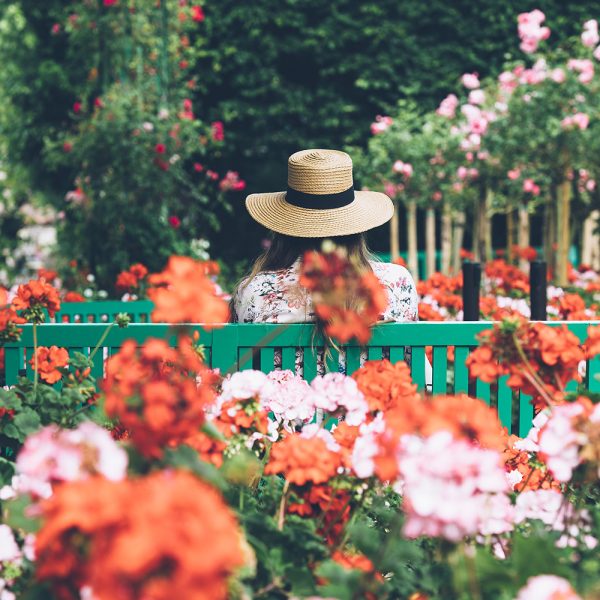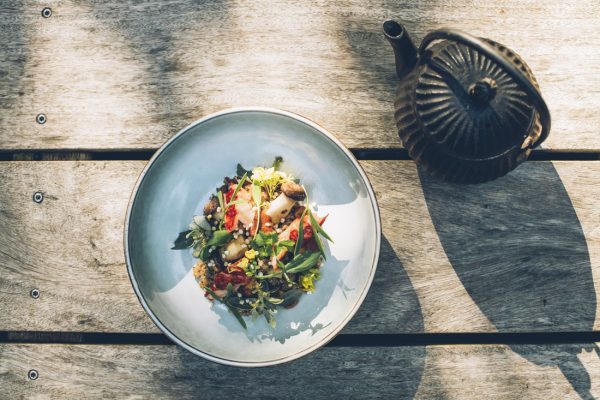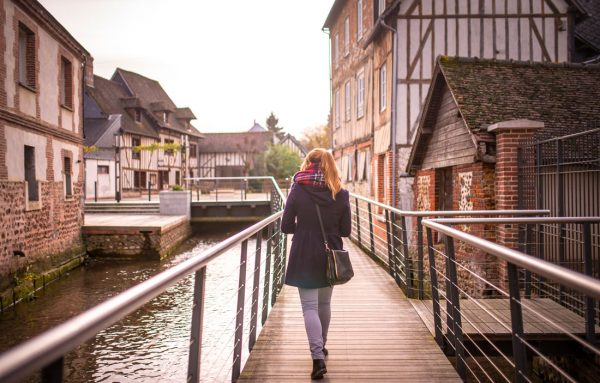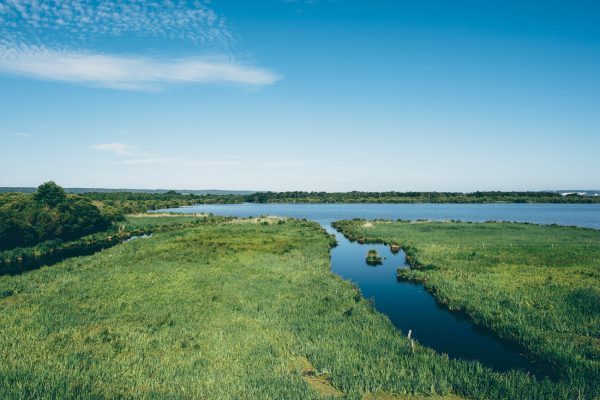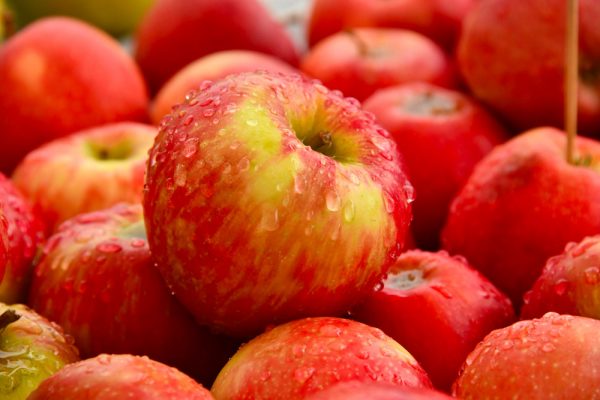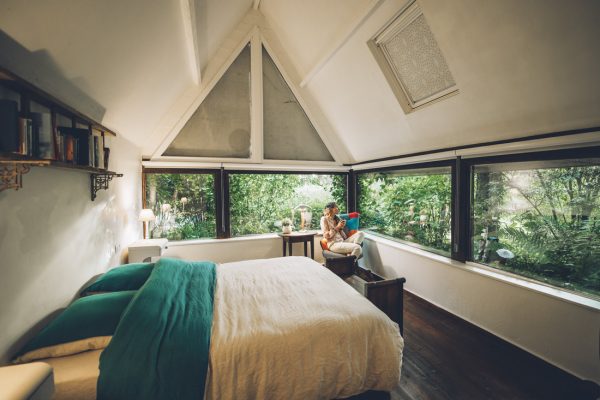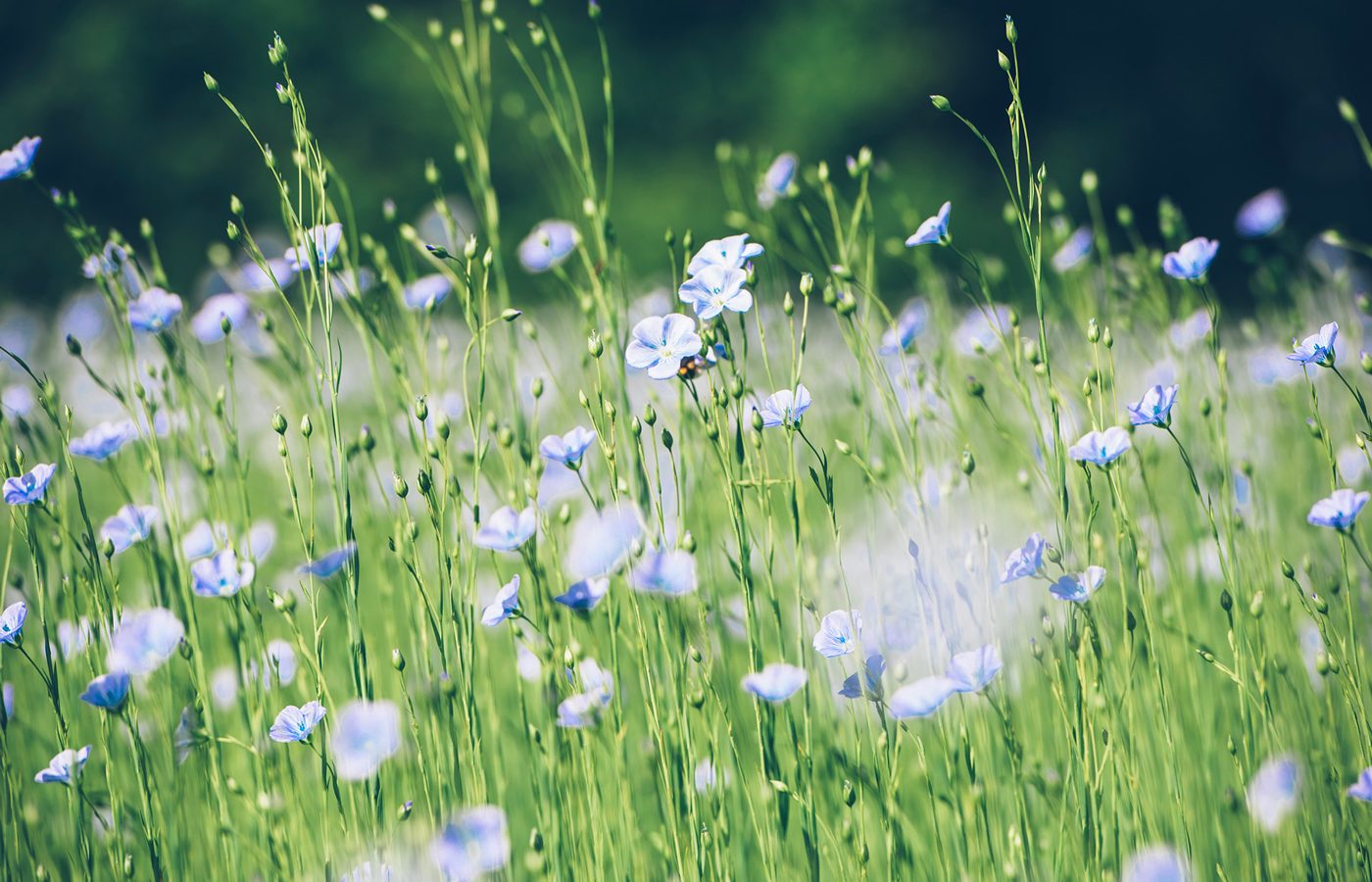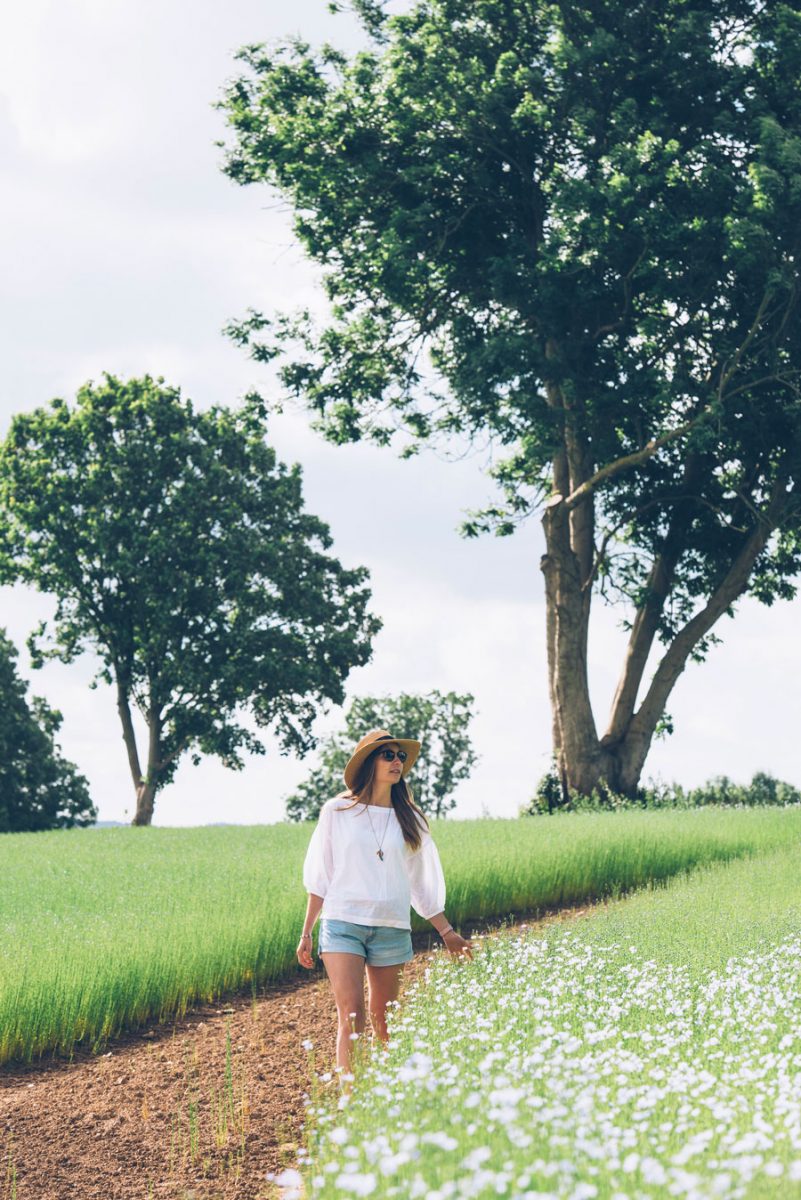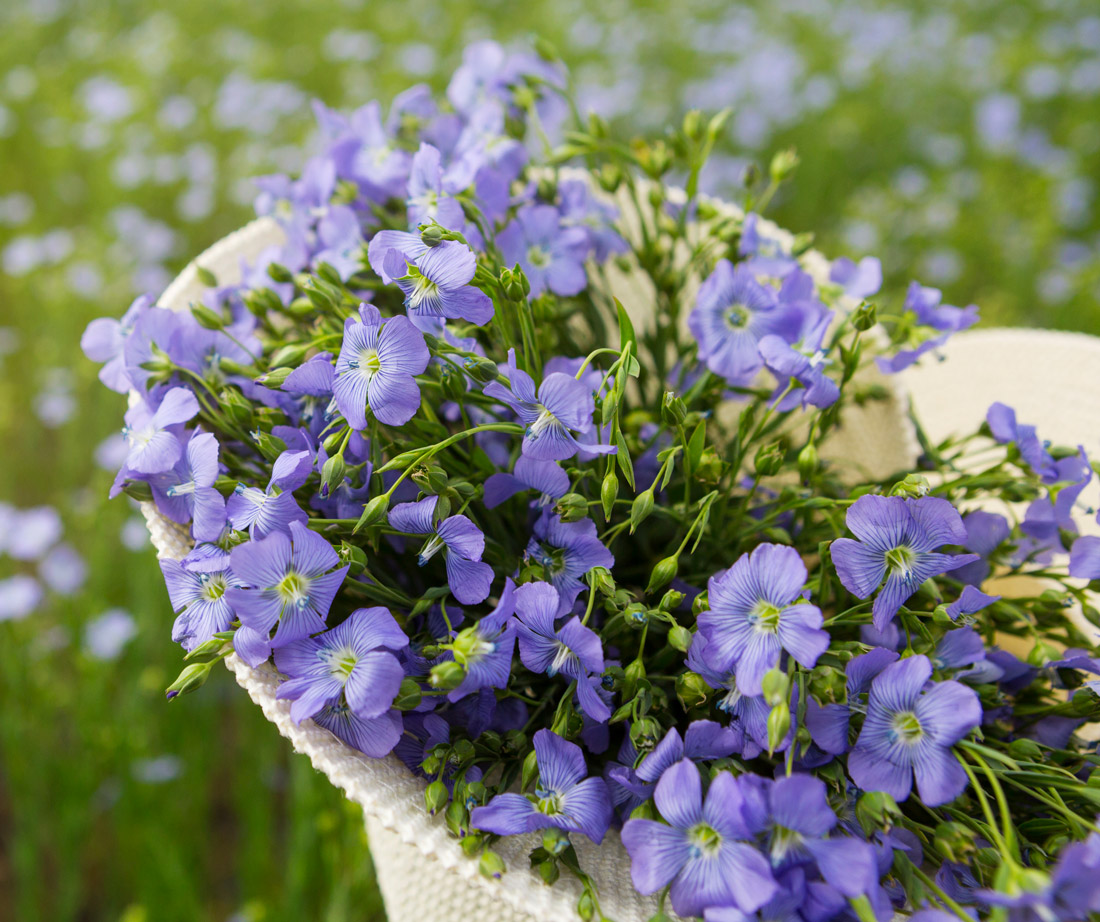A hint of Provence in Normandy!
As summer makes its first timid appearance, the atmosphere begins to warm up and the sun peeks out more frequently, the Eure’s plains develop a dazzling blue colour. Don’t be fooled, you are in Normandy with its stunning flax fields, not Provence with its lavender ones.
Visitors are often surprised the first time they witness such a display of flax reaching to the horizon, swaying in the wind, the long green stems of the plants topped by delicate blue flowers that create the illusion of an ocean spreading across Normandy’s interior! Flowering flax transforms the landscapes here, creating a delightful vision. It’s hard not to compare the scene with that in Provence, with its great stretches of lavender.
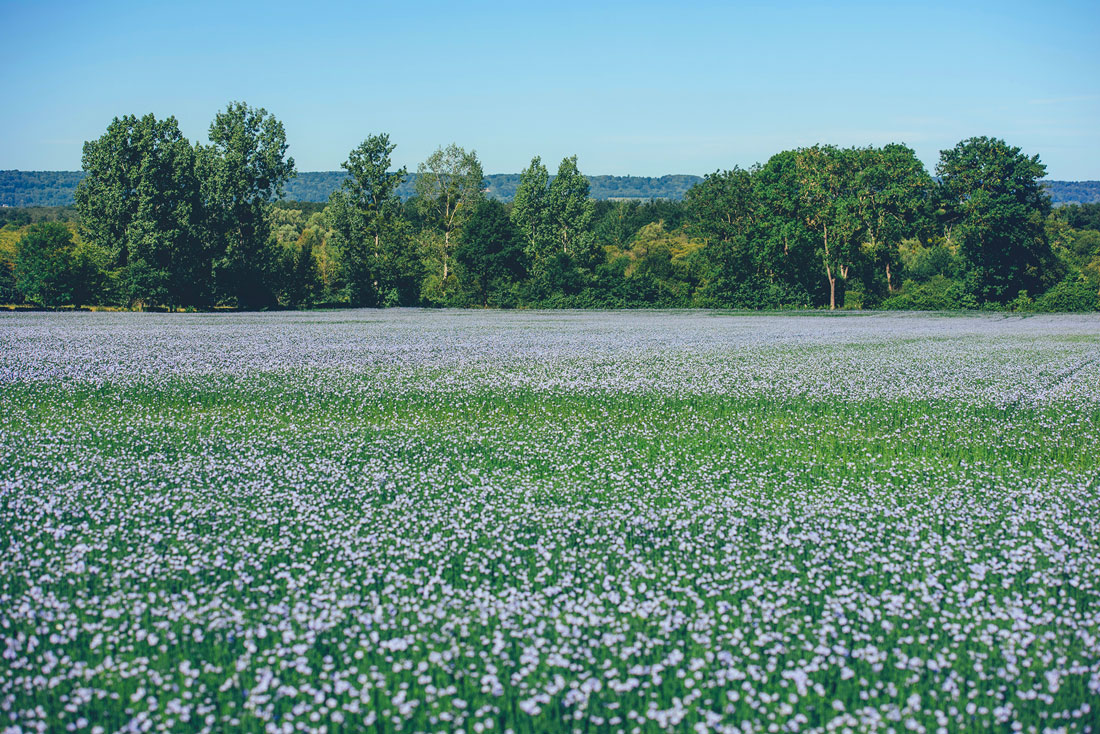
Flax, Normandy’s blue gold!
To be able to admire our flax fields in flower, you need patience and a bit of luck, as you can only enjoy the sight at certain times and in certain places. To capture the scene, you should come in the first half of June to the Le Neubourg Plateau or the Pays du Roumois area around the Marais Vernier marshlands. Do be aware, though, that flax only flowers briefly, blossoming in the morning, but wilting in the evening. So, to admire it in its full splendour, seek it out between 10am and midday.
![Promenade, lin © Max Coquart, Best Jobers]()
Promenade, lin © Max Coquart, Best Jobers ![Bouquet de fleurs de lin © AdobeStock, aneduard]()
Bouquet de fleurs de lin © AdobeStock, aneduard
Normandy, a land of flax
Flax has been cultivated in Normandy for centuries. A part of the region’s landscapes, culture and know-how, it has been nicknamed Normandy’s blue gold. With good reason, as Normandy is the leading region in the world for the production of flax textiles. Flax thrives in the Eure, benefiting from the optimal climatic conditions.
While in the Eure, do visit the Maison du Lin at Routot in the Parc Naturel des Boucles de la Seine Normande, in the heart of the Roumois area. This écomusée, focusing on the long-established local tradition, presents the diverse ways flax has been grown and used in history and up to the present. The county of the Eure combined with the neighbouring county of Seine-Maritime – together once forming what was Haute-Normandie, or Upper Normandy – constitutes the leading producer in the world of flax, here covering thousands of hectares. The Normandy flax cooperatives not only encourage flax cultivation but also the conservation of flax seeds to help improve the quality of the region’s natural flax fibres. As a global leader in this domain, Normandy is also at the cutting edge as regards the management of flax quality and the uses of flax.
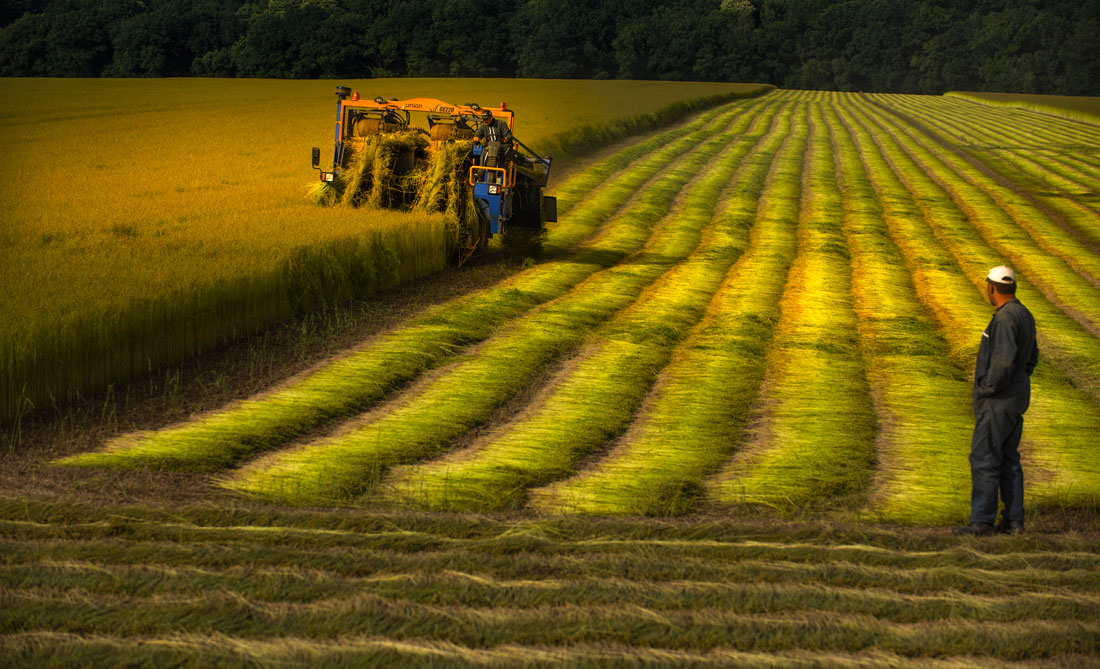
Flax for the future
As an environmentally-friendly, biodegradable plant fibre, flax is a natural material with a bright future. Flax is a perfect product for our times, both ecologically sustainable and producing zero waste, as every part of the plant, from the tip, via the stem, to its roots, is useful. Flax grows well on the Eure’s ordinary pasturelands. It requires a good amount of rainfall and sun to develop, so the Normandy climate proves ideal for the plant to flourish. It’s not just that flax is ecological. The terroir in these parts is also tended with great skill so that producers can make the most of the whole plant, including roots and seeds, when it reaches maturity.
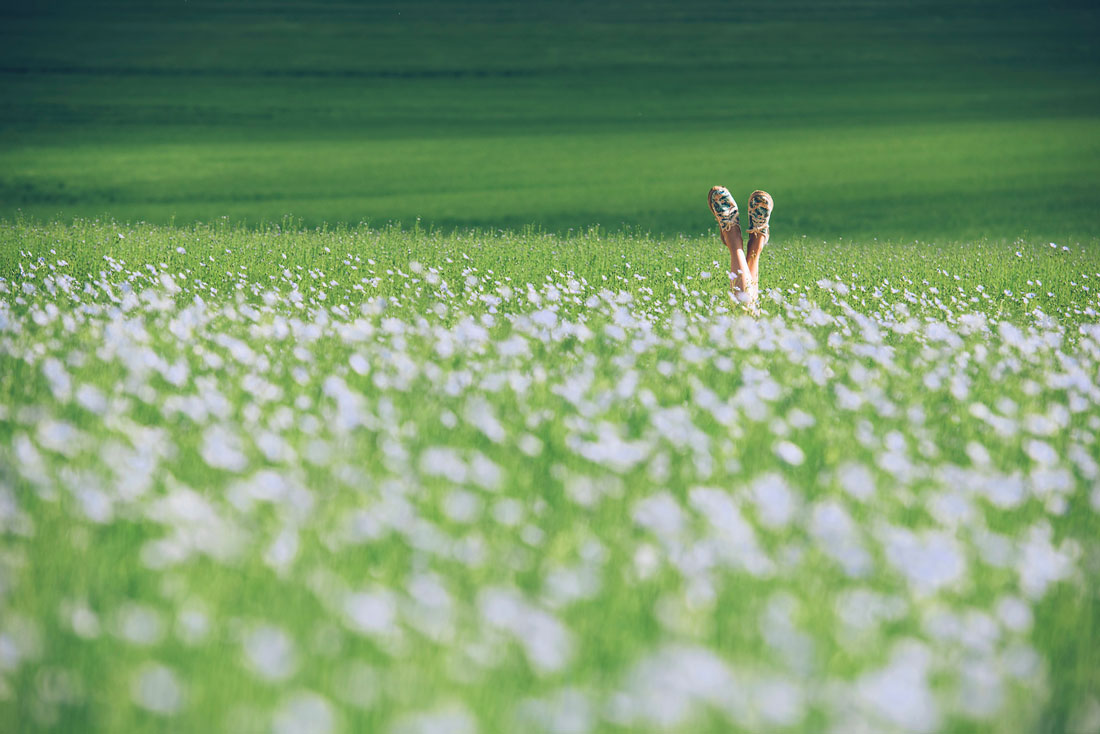
Flax, from fibre to fashion
Flax for textile production is grown for the quality of its fibre, which is light, strong, waterproof and thermo-regulating, and so suitable for both clothing, household linen and decorative uses. For centuries, flax transformed into linen made up a large part of local brides’ trousseaus, which would include linen sheets, tablecloths, cloths and curtains, along with the necessary ironing utensils. It’s a great plus that this plant fibre has continued to be used in the textile industry here. Today, both flax and hemp serve to produce linen cloth for the likes of shirts, trousers, hats and bed linen… Flax linen, with its cream tones, is much appreciated for making radiant summer garments.
Normandy linen materials can now be found across the globe, employed in craft and haute couture clothes manufacturing. There’s quite a competition going on between cotton and flax. But white flax has the upper hand, with its many advantages in terms of ethical issues for the planet and environmental conservation. In Normandy, producers are also reviving the skills of flax scutching, spinning and weaving. A textile mill in the Eure will soon be producing yarn for the making of linen material and woven linen. Before long, organic textiles made in France from natural French flax will be available on the market.
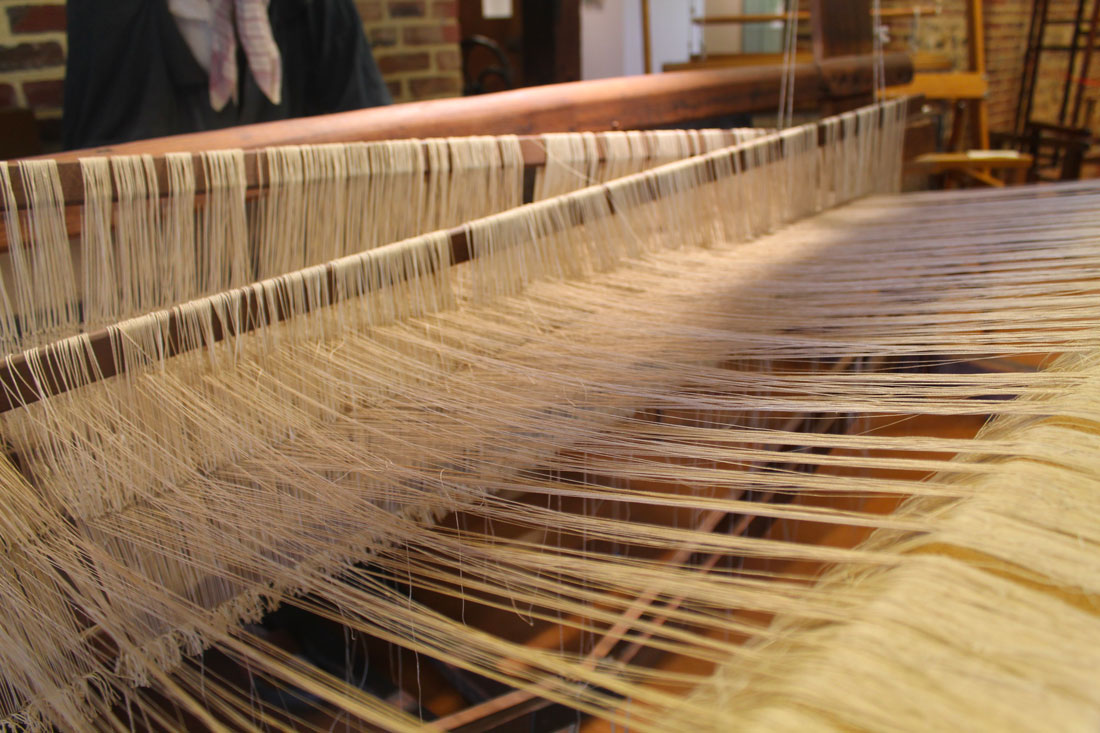
From tough flax to protective linseed oil
Flax’s natural fibres are very hard-wearing. This natural material is now put to use to create composite materials used even in the building trade. Flax fibres are being employed in particular to create insulation with heat-retaining and sustainable properties. As to linseed oil, produced from flax seeds, it’s much used in furniture production. The oil covers the wood with a protective coating that combats humidity, insects and natural wear and tear. Extracted from flax seeds, 100% natural linseed oil has further beneficial uses, both in nutrition and in ointments.
Linseed’s healthy properties
Did you know that flax seeds are beneficial in combating high blood pressure? Linseed also plays an essential role in livestock nutrition, which is particularly useful here, as Normandy is a region where many animals are reared as well as being such a major flax producer. Travelling around our region, you’ll notice all the cows grazing in our meadows and the horses gambolling in our paddocks. Linseed plays a significant role in giving them a balanced diet, being rich in fatty acids that form part of the Omega 3 family.
Natural and gentle, flax flowers are quite unique in the world. Whether you consider our flax as blue gold or green gold, you’ll now be aware that there’s more than a grain of magic to all that flax growing across our Normandy lands!



